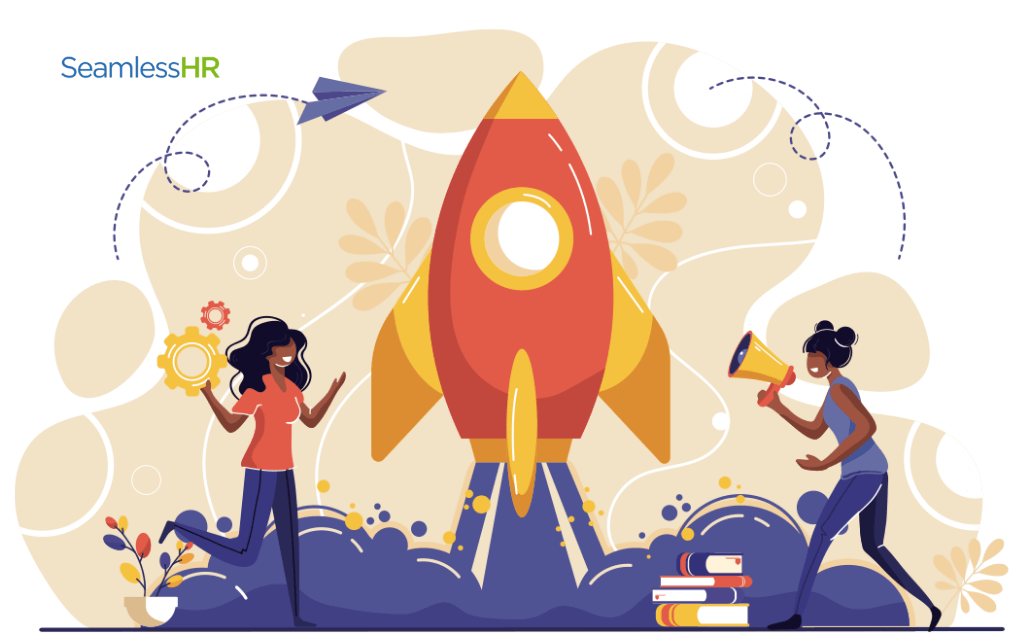Managing human resources is a big responsibility, the scope of which varies by organisation. HR functions range from intensive, recurring tasks like recruitment, compensation & benefits, performance management, learning, and development, among others.
The tasks domiciled under these HR functions can be a lot to manage manually, especially in large or agile organisations. With HR software, activities like this can be automated, helping the HR department operate more efficiently.
However, while HR professionals know the potential benefits an HRMS (or the needed HR software) can have for their department and the organisation as a whole, having to pitch HR software to company decision-makers can sometimes be problematic. Management might see such a request as an unjustified expense with little or no potential ROI.
To convince top-level management and other decision-makers about the need for HR software, HR should emphasise the potential value of the solution beyond its time-saving impact.
Importance Of HR Software
1. Data security
With HR software, users are restricted on the data they can access. Employees can only see and update their information, and only users with assigned permissions can see confidential HR and company data. Activities of users are tracked on the system, which is a check to fraud or other forms of malicious activities.
Additionally, cloud-based HR systems like SeamlessHRMS offer data encryption and additional security by being hosted on the cloud.
2. Saves time
With the many responsibilities of the HR unit that frequently need attention, HR might soon feel overworked. An HR system automates most of these time-consuming tasks, freeing up valuable time for the members of the unit.
3. Tracks employees’ performance
Employee performance can affect the total productivity of a business. Using an end-to-end HRMS or a standalone performance management software, HR managers can notice trends and patterns that detract from or support organisational objectives and then take the necessary steps to correct or replicate such patterns.
Tracking performance helps to boost employee productivity, improve job satisfaction, and organisational growth.
4. Simplified and accurate reporting
HR software helps HR professionals have ready access to relevant information. HR reporting becomes easier and accurate because data no longer has to be pulled in from different sources or confusing spreadsheets.
This easy access to HR data helps to support workforce planning and forecasting, as well.
5. Manage learning and development
As the business grows over time, its needs expand. This is why companies need to prioritise the learning and development of their employees. The new demands of a growing business will require employees to develop themselves and improve existing skills to better add value to the company.
End-to-end Human Resource Management Systems like SeamlessHRMS usually have a learning management module where HR can upload courses or access existing course content, set learning targets, and track employee engagement with course content.
6. Time and attendance management
HR software allows HR to manage and track time-related issues more efficiently. With an HRMS or a time and attendance module, you can update late coming and other relevant policies, then link time and attendance with payroll, so necessary updates are effected across board.
How to Prepare to Pitch HR Software to Your Stakeholders
There are so many benefits to using HR software for the business and the HR department. The dilemma here is this – how do you, as an HR professional, convince the C-suite executives and other decision-makers about using an HR tech solution?
Here are a few things to note as you prepare your pitch deck:
Be concise
Most C-suites executives and major decision-makers are busy people. Get right to the subject matter in the first sixty seconds of your presentation. Starting with a real-life business problem that reflects the need to have the required HR software will get their attention.
Then, tie the problem mentioned at the beginning of your presentation with the HRMS solution. Focus on the benefits of the solution that answer your organisational challenges as described in your presentation.
Swing with interruptions
You could be interrupted with a question or observation while you’re warming up to your pitch. Don’t let it throw you off guard.
Aside from your rehearsed slides, you’ll need to have an in-depth knowledge of the problem and the HR solution you’re proffering because the pitch may not go as you have planned.
Rehearse
Knowledge of your slides is half the work, but how you present the HR solution to your stakeholders will significantly determine if your pitch would be approved or not.
Here are some tips to guide your rehearsal:
- Practice eye contact by staring at yourself in the mirror
- Run through your presentation in front of a mirror and record your voice on a recording app. Listen to the audio recording to note and correct things like your tone of voice, usage of filler words, and your pronunciations.
- Pitch your ideas in front of a trusted colleague in the HR department. Ask for feedback on your body language and the presentation itself.
How To Pitch HR Software To Your Boss
As you go ahead to pitch HR software to top-level executives, here are a few things they will want to see in your presentation.
1. Cost analysis
To pitch HR software to your boss, you should not just list the benefits of the software and end there. Think about management’s potential concerns, and try to address them. Let your pitch discuss the cost impact and explain the possible ROI on the HR software.
Alternately, you can bring in your preferred solutions provider to handle this part of the presentation.
2. Data security
Your pitch should highlight available security features on the HRMS like a workflow system to check against misuse, end-to-end encryption, an audit trail function, etc.
3. User-friendliness
Is the software easy to operate, or will the IT team have to be called every time an employee wants to apply for time off?
Your pitch should address concerns like this to assure the management that investing in the software would not be a waste or cause additional business problems. Engaging in a demo session with representatives of the software company you’ve identified can help you gain the information you need for this part of your presentation.
If possible, share images or videos to validate your point.
4. Availability of technical support
Let your stakeholders know that the HR solutions provider you have earmarked will implement the software as quickly as possible, support the team with getting to use the system, and be available if there are any challenges in using the system.
5. Value
Does the software have features that meet your organisation’s unique needs and eventually offer the best value for the money spent? In this part of your pitch, you can compare different HR software brands to show your boss the perks of choosing your preferred software.
6. Improved productivity
Show your audience in clear terms, just how using the HR software can improve HR and company-wide productivity. Refer to case studies of companies similar to yours, and let the ‘before and after’ results speak for themselves.
You can also make projections of what you anticipate the results of using the HR software to be in terms of hours saved for HR and employees and potential earnings for the company.






